Abstract
1. NADPH-linked aldehyde reductase from pig, ox and rat brain exhibits non-linear reciprocal plots when partially purified enzyme preparations are studied. 2. In pig brain this non-linearity is due to the presence of two distinct aldehyde reductases, which can be separated by DEAE-cellulose chromatography. 3. These two enzymes can be distinguished by several criteria, including pH optima, Michaelis constants for substrates and their inhibitor sensitivity. 4. The probable role of these enzymes in the metabolism of the aldehydes derived from the biogenic amines is discussed.
Full text
PDF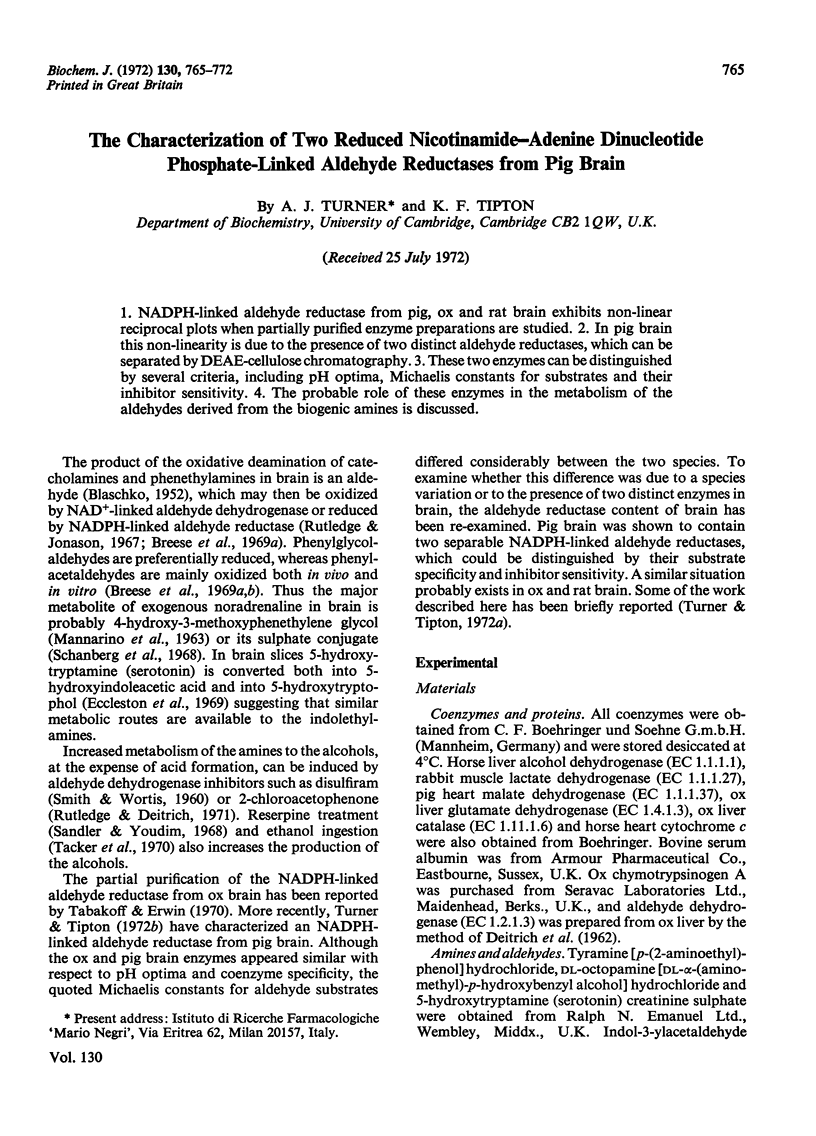
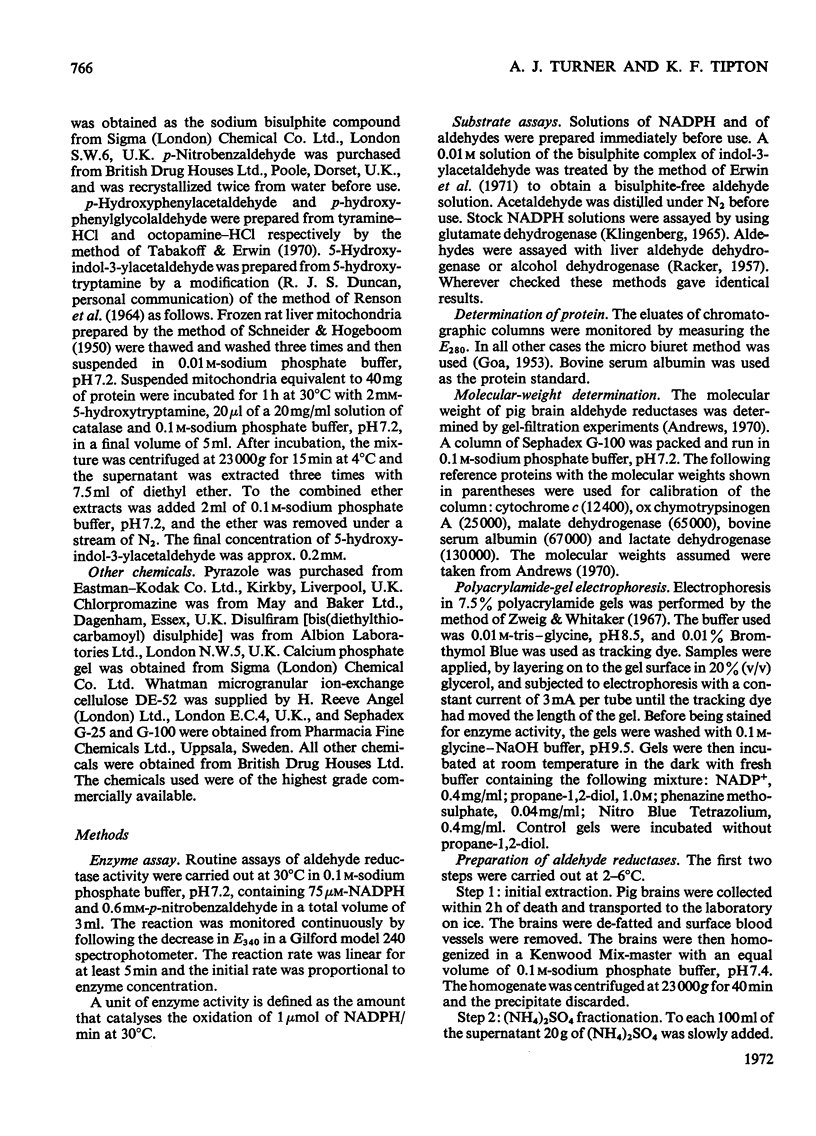
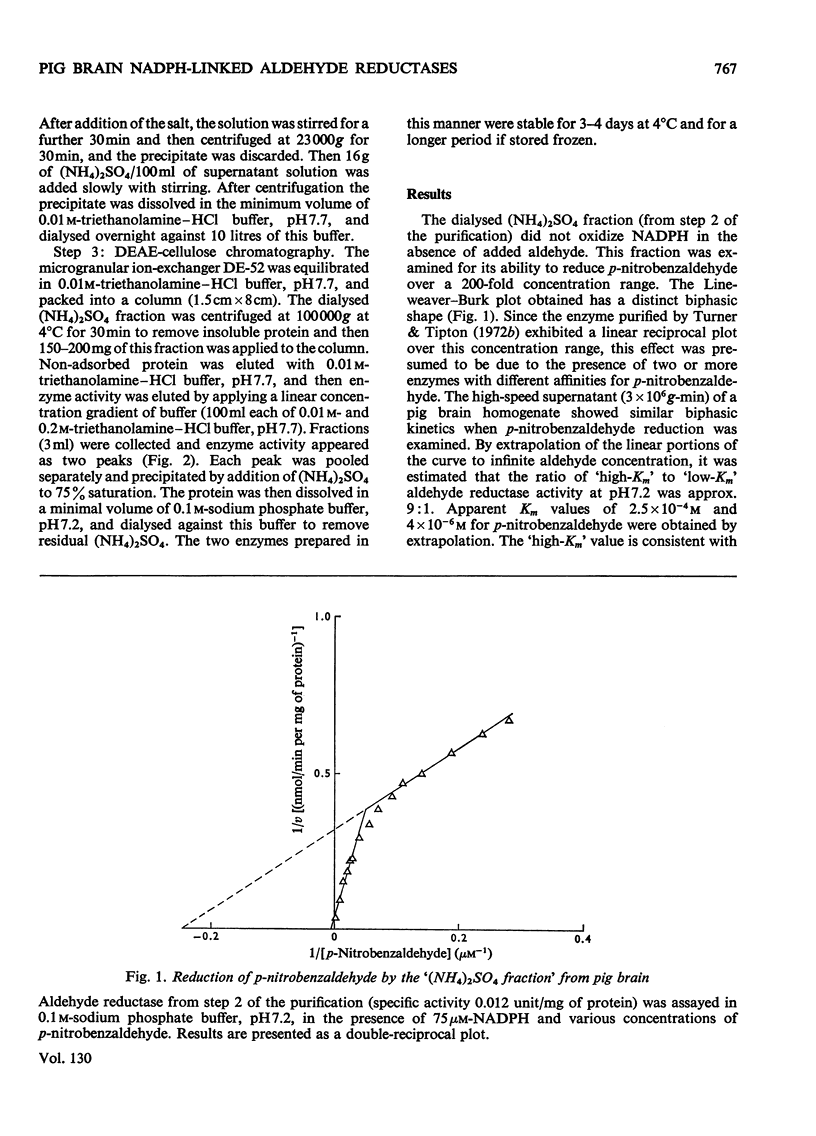
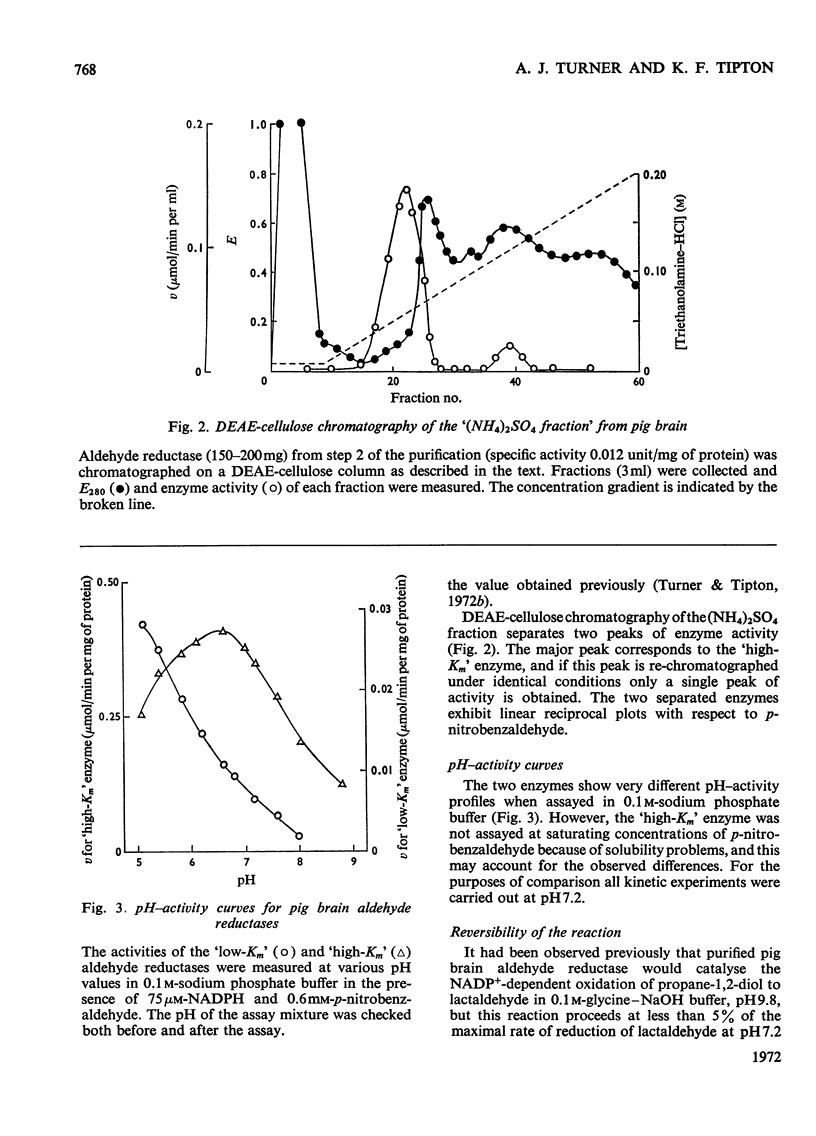
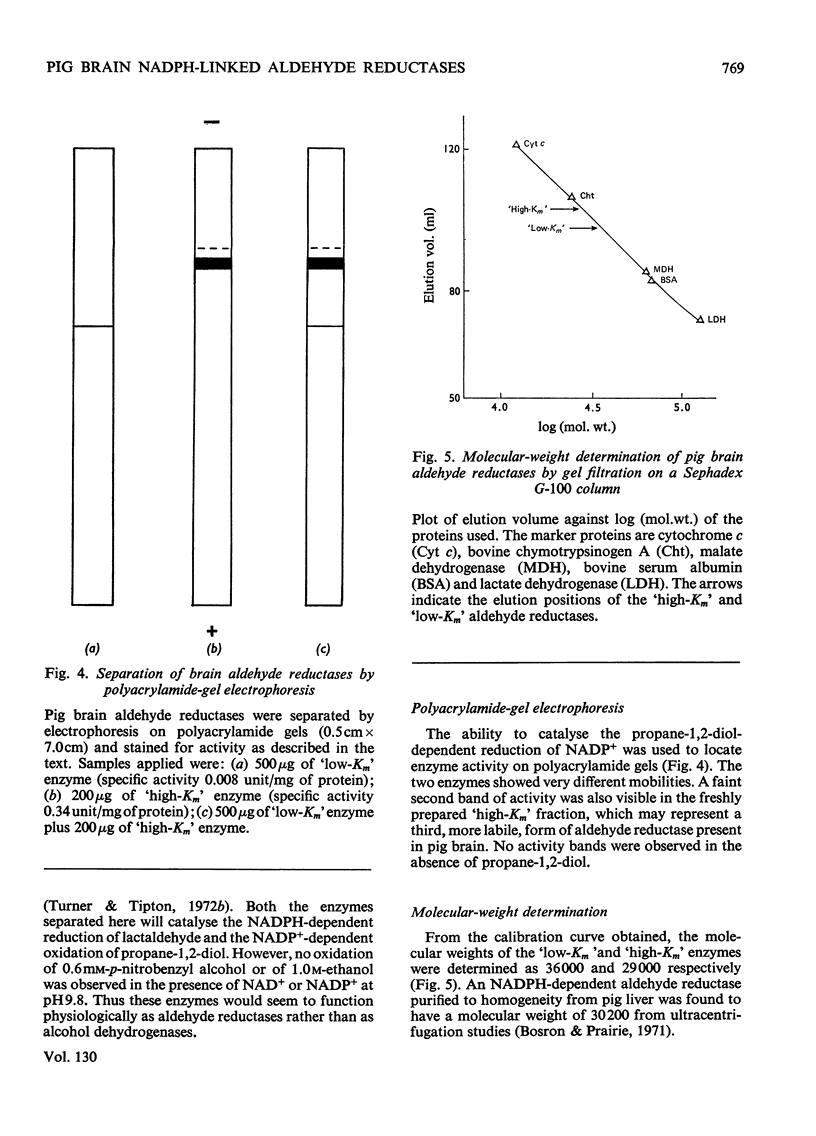
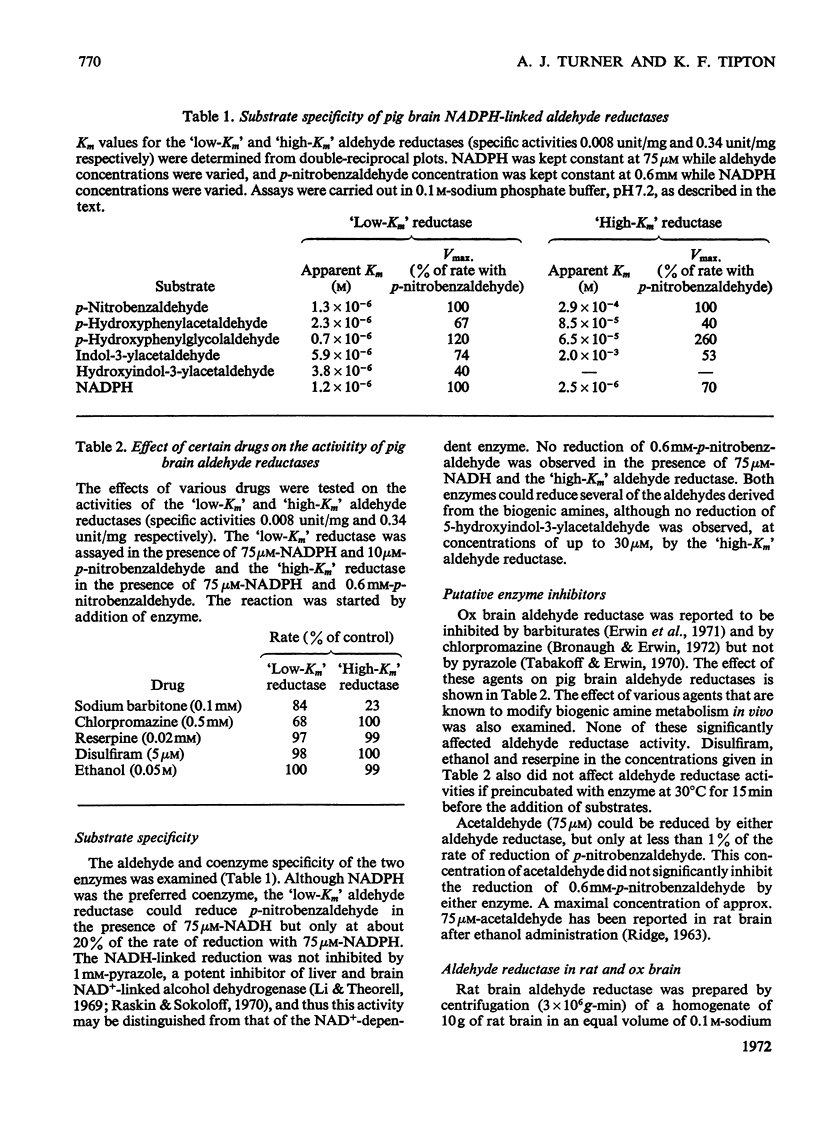
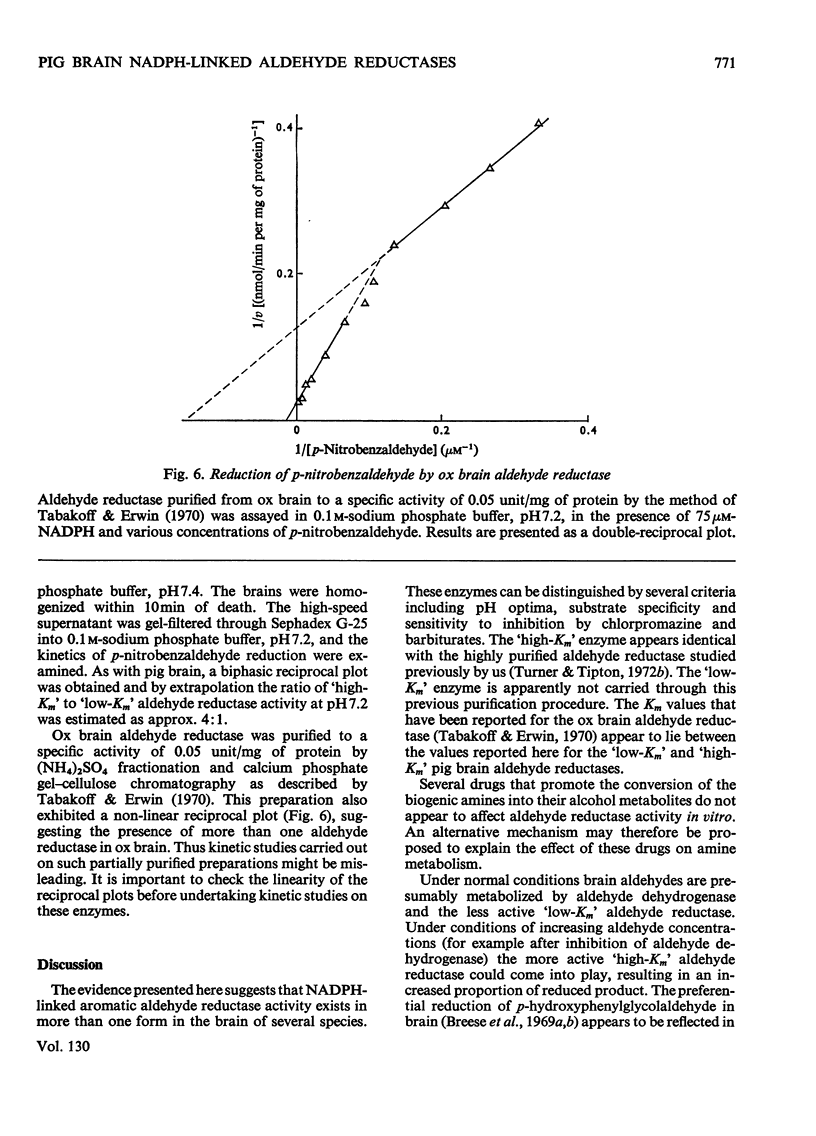
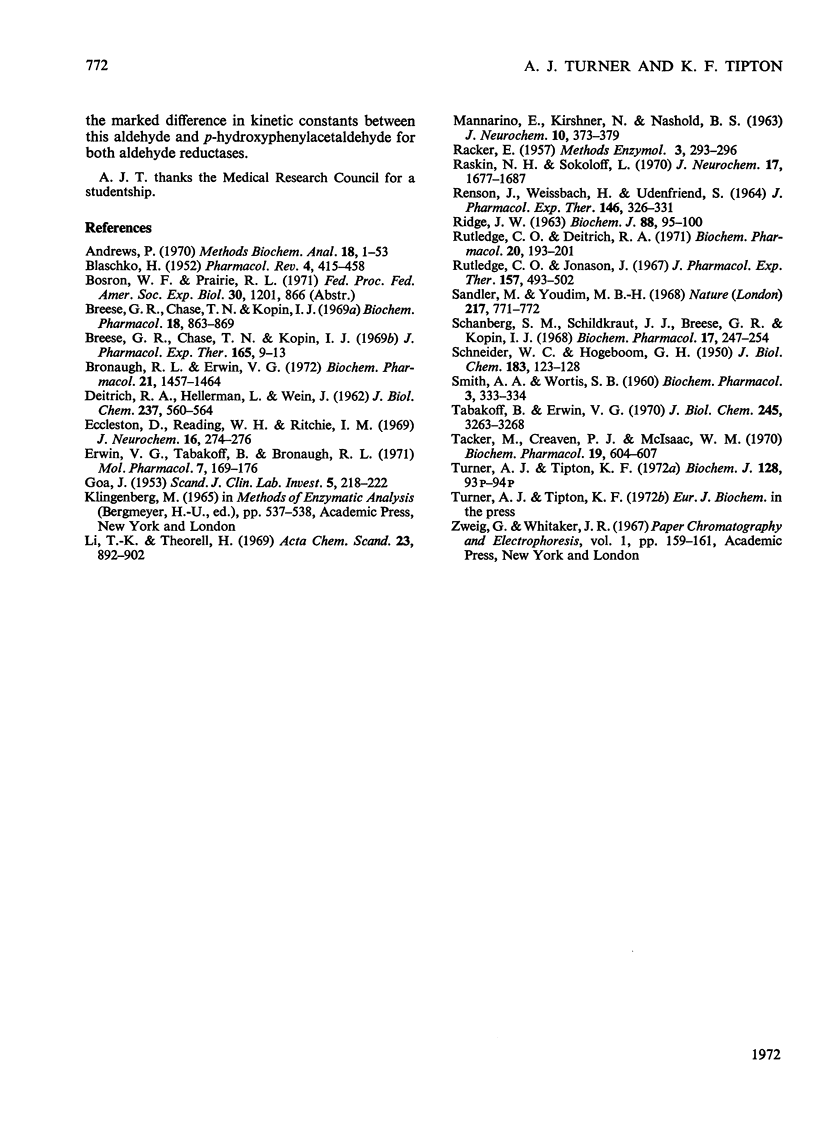
Selected References
These references are in PubMed. This may not be the complete list of references from this article.
- Andrews P. Estimation of molecular size and molecular weights of biological compounds by gel filtration. Methods Biochem Anal. 1970;18:1–53. [PubMed] [Google Scholar]
- BLASCHKO H. Amine oxidase and amine metabolism. Pharmacol Rev. 1952 Dec;4(4):415–458. [PubMed] [Google Scholar]
- Breese G. R., Chase T. N., Kopin I. J. Metabolism of some phenylethylamines and their beta-hydroxylated analogs in brain. J Pharmacol Exp Ther. 1969 Jan;165(1):9–13. [PubMed] [Google Scholar]
- Breese G. R., Chase T. N., Kopin I. J. Metabolism of tyramine-3H and octopamine-3H by rat brain. Biochem Pharmacol. 1969 Apr;18(4):863–869. doi: 10.1016/0006-2952(69)90057-4. [DOI] [PubMed] [Google Scholar]
- Bronaugh R. L., Erwin V. G. Further characterization of a reduced nicotinamide-adenine dinucleotide phosphate-dependent aldehyde reductase from bovine brain. Inhibition by phenothiazine derivatives. Biochem Pharmacol. 1972 May 15;21(10):1457–1464. doi: 10.1016/0006-2952(72)90370-x. [DOI] [PubMed] [Google Scholar]
- DEITRICH R. A., HELLERMAN L., WEIN J. Diphosphopyridine nucleotide-linked aldehyde dehydrogenase. I. Specificity and sigma-rho function. J Biol Chem. 1962 Feb;237:560–564. [PubMed] [Google Scholar]
- Eccleston D., Reading W. H., Ritchie I. M. 5-Hydroxytryptamine metabolism in brain and liver slices and the effect of ethanol. J Neurochem. 1969 Feb;16(2):274–276. doi: 10.1111/j.1471-4159.1969.tb05946.x. [DOI] [PubMed] [Google Scholar]
- Erwin V. G., Tabakoff B., Bronaugh R. L. Inhibition of a reduced nicotinamide adenine dinucleotide phosphate-linked aldehyde reductase from bovine brain by barbiturates. Mol Pharmacol. 1971 Mar;7(2):169–176. [PubMed] [Google Scholar]
- GOA J. A micro biuret method for protein determination; determination of total protein in cerebrospinal fluid. Scand J Clin Lab Invest. 1953;5(3):218–222. doi: 10.3109/00365515309094189. [DOI] [PubMed] [Google Scholar]
- Li T. K., Theorell H. Human liver alcohol dehydrogenase: inhibition by pyrazole and pyrazole analogs. Acta Chem Scand. 1969;23(3):892–902. doi: 10.3891/acta.chem.scand.23-0892. [DOI] [PubMed] [Google Scholar]
- RENSON J., WEISSBACH H., UDENFRIEND S. STUDIES ON THE BIOLOGICAL ACTIVITIES OF THE ALDEHYDES DERIVED FROM NOREPINEPHRINE, SEROTONIN, TRYPTAMINE AND HISTAMINE. J Pharmacol Exp Ther. 1964 Mar;143:326–331. [PubMed] [Google Scholar]
- RIDGE J. W. The metabolism of acetaldehyde by the brain in vivo. Biochem J. 1963 Jul;88:95–100. doi: 10.1042/bj0880095. [DOI] [PMC free article] [PubMed] [Google Scholar]
- Raskin N. H., Sokoloff L. Alcohol dehydrogenase activity in rat brain and liver. J Neurochem. 1970 Dec;17(12):1677–1687. doi: 10.1111/j.1471-4159.1970.tb11392.x. [DOI] [PubMed] [Google Scholar]
- Rutledge C. O., Deitrich R. A. Inhibition of aldehyde dehydrogenase by 2-chloroacetophenone and the resultant effects on the catabolism of norepinephrine in brain. Biochem Pharmacol. 1971 Jan;20(1):193–201. doi: 10.1016/0006-2952(71)90485-0. [DOI] [PubMed] [Google Scholar]
- Rutledge C. O., Jonason J. Metabolic pathways of dopamine and norepinephrine in rabbit brain in vitro. J Pharmacol Exp Ther. 1967 Sep;157(3):493–502. [PubMed] [Google Scholar]
- SMITH A. A., WORTIS S. B. The effect of disulfiram on the metabolism of normetanephrine-1-14C in the guinea pig. Biochem Pharmacol. 1960 Jul;3:333–334. doi: 10.1016/0006-2952(60)90100-3. [DOI] [PubMed] [Google Scholar]
- Sandler M., Youdim M. B. Promotion of 4-hydroxy-3-methoxyphenylglycol formation in man by reserpine. Nature. 1968 Feb 24;217(5130):771–772. doi: 10.1038/217771a0. [DOI] [PubMed] [Google Scholar]
- Schanberg S. M., Schildkraut J. J., Breese G. R., Kopin I. J. Metabolism of normetanephrine-H3 in rat brain--identification of conjugated 3-methoxy-4-hydrophenylglycol as the major metabolite. Biochem Pharmacol. 1968 Feb;17(2):247–254. doi: 10.1016/0006-2952(68)90330-4. [DOI] [PMC free article] [PubMed] [Google Scholar]
- Tabakoff B., Erwin V. G. Purification and characterization of a reduced nicotinamide adenine dinucleotide phosphate-linked aldehyde reductase from brain. J Biol Chem. 1970 Jun;245(12):3263–3268. [PubMed] [Google Scholar]
- Tacker M., Creaven P. J., McIsaac W. M. Alteration in tyramine metabolism by ethanol. Biochem Pharmacol. 1970 Feb;19(2):604–607. doi: 10.1016/0006-2952(70)90216-9. [DOI] [PubMed] [Google Scholar]


